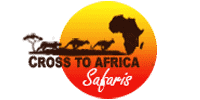Kilimanjaro Packlist
Kit in bold italics can be hired from us by prior request.
To assist in shopping and packing it is helpful to print out a copy of this recommended Kilimanjaro kit list and tick off boxes as each item is acquired or packed.
Simplifying the Process of Buying Your Kilimanjaro Equipment
Most of our climbers are busy people who have to pack a lot into very full lives. To help you find good quality equipment to use on your Kilimanjaro climb with us, we’ve compiled a range of recommended items that are available at different price ranges.
- Large Rucksack or Holdall, 70-
90 litres capacity (for kit carried by porter) - Daysack, 25-
35 litres (for personal use on mountain; ready- access items) - Sleeping Bag (minus 10 degrees Centigrade rating or colder).
- Waterproof rucksack liner or heavy duty plastic sack
- Elasticated waterproof rucksack cover
NB: sleeping mattresses are not required as we provide these for you.
- Sweat-
wicking T- shirts / vests - Fleece.
- Insulated down jacket or similar.
- Down mittens or similar.
- Thermal long-
johns for summit night. - Lightweight walking trousers (avoid jeans or heavy cotton as they chafe and dry slowly)
- Underwear (briefs are usually better than boxer shorts which gather and chafe)
- Very good quality hiking socks and thin liner socks. (We advise that socks should be at least a size too small otherwise they stretch and bunch causing blisters)
- Breathable lightweight waterproofs (jacket and trousers).
- Waterproof walking boots, sturdy and worn-
in. A Gore- Tex membrane or similar is advised. While Alpine or C3 boots are not required for Kilimanjaro it is important that your boots have good ankle and arch support and good deep read patterns. - Calf gaiters
- Balaclava
- Goretex Mountain Cap or Woollen Hat
- Wide brimmed sun hat to protect face, ears and neck
- Hygiene related gear for use on Kilimanjaro
- Toothbrush, toothpaste & deodorant
- Flat packed Wet Ones, travel wipes, or similar for personal hygiene on the mountain.
- Kleenex tissues in plastic travel pouches or toilet paper
- Hairbrush / comb
- Sanitary products
- Lip salve with UV protection
- Vaseline, to prevent chafing skin and heel friction blisters
- Malaria Tablets (if you choose to take these. Most will seek advice from their GP. Note that some anti-
malarial courses need to commence several weeks before departure) - Factor 30+ sun cream
- Sun barrier cream white / blue for nose and ears
- Pain Killers (Ibuprofen)
- Diamox (Acetazolamide) if you choose to use this.
- Paracetamol
- Zinc oxide tape and small scissors.
- Compeed Blister Pads
- Loperamide Diahorrea Tablets
- Any medication you normally use
- Dioralyte sachets or similar rehydration packs.
Note that your guide will carry a more comprehensive medical kit containing additional Acetazolamide, Ibuprofen, Anti-
Where a climber has specific health concerns that they or their doctor anticipate being exacerbated by exposure to high altitude, or if he has a history of heart disease in the family, we would advise that he requests that we carry an additional canister of emergency oxygen.
- Pain Killers (Ibuprofen)
- Diamox (Acetazolamide) if you choose to use this.
- Paracetamol
- Zinc oxide tape and small scissors.
- Compeed Blister Pads
- Loperamide Diahorrea Tablets
- Any medication you normally use
- Dioralyte sachets or similar rehydration packs.
Note that your guide will carry a more comprehensive medical kit containing additional Acetazolamide, Ibuprofen, Anti-
Where a climber has specific health concerns that they or their doctor anticipate being exacerbated by exposure to high altitude, or if he has a history of heart disease in the family, we would advise that he requests that we carry an additional canister of emergency oxygen.
- Optional but recommended: Mountain Fuel (inter-
meal energy supplements and recovery drinks) - Camera and film or Digital Camera and spare memory cards
- Sunglasses with UV-
filter lenses - High energy snacks (Cereal bars, dried fruit and nuts)
- Spare Contact Lenses and fluid, if worn
- Watch
- Head torch with spare batteries and bulb for summit night & tent admin
- Water bottles & Camelbak (3 litres carrying capacity)
- Optional but recommended: Nuun hydration aids (portable electrolyte replacement tablets)
- Water Purification Tablets / Iodine drops
- Ear Plugs and blindfold (to aid sleep on afternoon before summit night)
- Plastic bags (for dirty washing, wrappings, etc.)
- Telescopic walking poles (optional)
- Mobile phone. There is signal reception on most parts of the mountain. It is a good idea to unlock your phone before you come out so that a local sim card can be used.
- Optional but recommended: Mountain Fuel (inter-
Optional but recommended: a good, strong, thermally efficient blizzard survival bag. We strongly recommend that all climbers possess one of these, especially when training alone or in small groups while preparing for Kilimanjaro. On Kilimanjaro, perhaps 10 –
What do you think of this program?
This program is carefully crafted by our professionals . But it should not limit your safari expectations
Not fully satisfied?
Do some tweaking on the program and get it to meet your expectations
